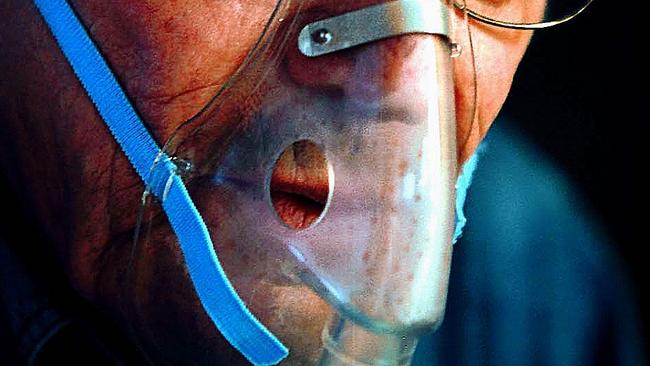Coronavirus: An air of confusion lingering over role of nebulisers

The term aerosol is being used to mean a dispersion of material small enough to remain in the air for a few minutes. Cigarette smoke and fogs are examples.
Nebulisers don’t directly increase the level of virus carried on an aerosol. The assumption that they do is at odds with my 30 years’ experience researching aerosols, and a recent expert paper addressing precisely this point. The paper from the International Society for Aerosols in Medicine concluded “there is no evidence medical nebulisers increase the infective load of (virus-carrying) bioaerosols”.
This is the view of other authorities, including the British Thoracic Society. Nebulisers are just one of many medical procedures that generate an aerosol. Others include the use of a ventilator to support a patient’s breathing or an invasive bronchoscopy to extract fluid from the lungs. Those two examples do indeed represent a COVID aerosol risk. But suspicion of nebulisers seems to be based on a lumping together of aerosol-generating procedures as if they all present a similar risk. They don’t; it depends on how they work.
A medical nebuliser generates a very fine fog — an aerosol from a solution of medicine. The patient inhales this nebuliser aerosol into their lungs in order to treat the airways. This is a water-based aerosol and the airway surface is also wet, so on contact these two merge into a pooled wet surface. A fraction of the nebuliser aerosol can be exhaled, and this does increase the amount of aerosol in the room, along with any residual nebuliser aerosol not inhaled. In each case, however, the aerosol will not have touched the potentially infected surface of the patient’s airway.
This is where the concerns — and misunderstanding — have arisen. Recent media reporting of research suggests nebuliser aerosol not only contacts the lung surface but pulls away the virus to be exhaled but, as I’ve explained, the device’s design would prevent this. And I am unaware of any evidence that nebuliser aerosols pick up the virus from the surface of the lungs and disperse it into a room. It’s true a badly infected patient may be exhaling a high viral load in the form of aerosols but these are not increased by “hitching a ride” on the fleeting nebuliser aerosol.
The erroneous explanations coming from Victorian authorities testify to a gap in understanding between public health experts, clinicians and the scientists who work with these inhalation aerosol systems. With better co-ordination, we could lead the world in establishing best practice for the range of medical procedures that generate aerosols.
Although I believe it’s clear that nebulisers are not increasing the spread of the virus aerosol directly, there are indirect virus aerosol health risks with such inhaler use. An inhaled drug can make patients cough, and this can increase spread of the virus. Inhaled medicines can alter the mucus — the liquid on the surface of the airways — and this may make it easier for the virus to spread by aerosol.
We need to clarify public and expert understanding of these issues through open debate. Misguided restriction of nebulisers could disrupt vital therapies for conditions such as asthma, chronic obstructive pulmonary disease and cystic fibrosis — or indeed for treatment of COVID-19, as being pioneered by companies such as Britain’s Synairgen working on nebulised interferon.
David Morton is professor of industry partnership in Deakin University’s school of engineering, and a founder and former head of research of medical inhaler company Vectura.



A traveller at Melbourne Airport’s Holiday Inn inhaling medicine from a nebuliser has been identified by Victorian authorities as a possible source of the COVID-19 outbreak leading to lockdown. But there is confusion and disagreement among medical experts in Australia and overseas on the role medical nebulisers may play in the spread of COVID-19.